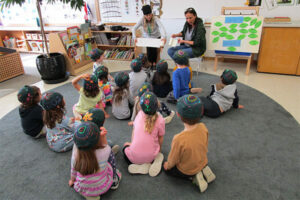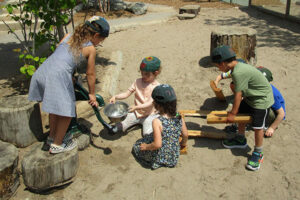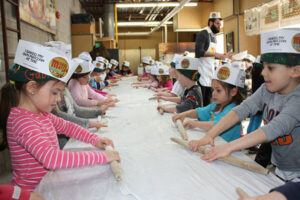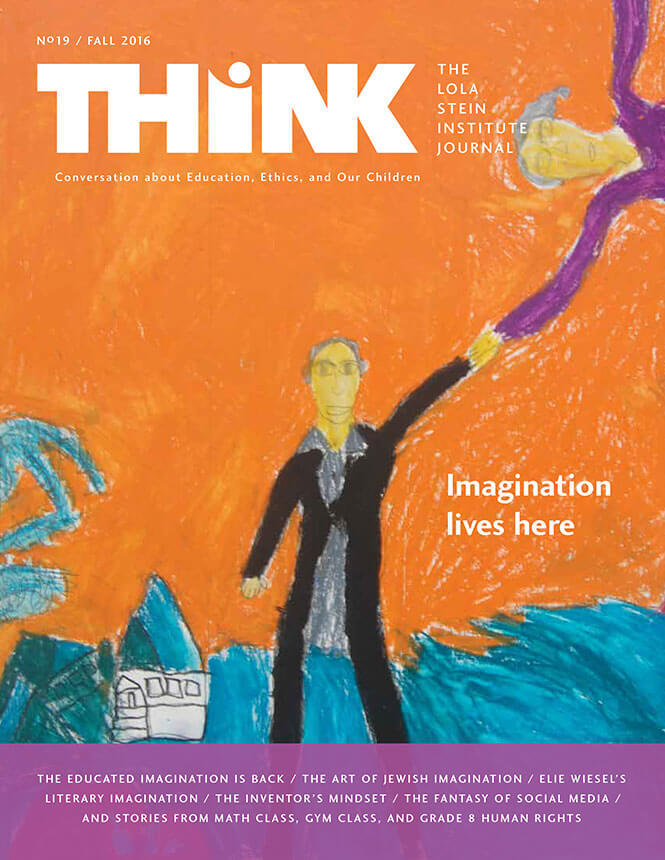- How We Teach

- First Column
- Second Column
- Third Column
- Case Studies

- First Column
- Second Column
- Culture & Community

- First Column
- Second Column
- News & Views

- Admissions

- First Column
- Second Column
- Support Us

- About

- First Column
- Second Column
- Parent Hub
- Attend an Open House
- Take a Tour
- Donate Now
- Calendar
- Blog
- 416-635-1876
- Search
Life Coach
Visualization in Sports
When I make wishes for children, beyond wishing them the experience of world peace, I wish that they will find self-motivation. I wish that their dreams will be fulfilled by their own boundless enthusiasm and that they will have the capacity to take themselves wherever they want to go. The wisdom is, “Don’t prepare the road for the child. Prepare the child for the road.”
From a young age, if we let them, children can learn to galvanize their aspirations through the obstacle course of implementation and into the winner’s circle of desired results. Self-motivation implies knowing what you want to do and how to get it going. It can begin with the physical and move to the intellectual—an operating system for purposeful living.
In David Rouimy’s gym class at The Toronto Heschel School, very small children learn the rudiments of self-regulation. Girls and boys, aged five, stand in the centre of hula hoops with eyes closed and follow David’s instructions. Comfortable that no one is watching (but David) and feeling safe in their protected circles, the children pretend they are animals—leopards, monkeys, lemurs. Leaping, balancing, pouncing, they enact the imagined animals in full-out performance, each in his or her unique natural way, and unconstrained by self-consciousness or competitiveness.
They are using their imaginations to frame an intention and improvise its realization. David says the very young take well to visualization, and he sharpens their capacity early. These are lessons #1 and #2 in self-motivation: naming a target and enjoying the bull’s-eye. “Today I am a leopard lunging and I like it.”
Lesson #3 introduces interference. Roads do come with bumps, and travelers have varying talents and baggage. Just as Olympic coaches zero in on the mental game, David introduces the self-directed mindset to his students at a very young age. For example, if a child is too excited to stand still and talk, David might ask him or her to jump and jump until the energy dissipates and the child can speak calmly. The excitement that was interfering with the participation disappears, along with any feelings of frustration or humiliation, which usually a child dislikes and regrets. David reinforces his students’ appreciation of the achievement; he is introducing self-aware self-regulation when it is manageable and when its benefits are simple and clear. It’s a life skill named and explained.
With students aged nine and 10, David also cleans up “head space” to improve athletic performance. A child’s attentiveness can be consumed by wanting to please, hating to make mistakes, and fearing embarrassment. The emotions can interfere with physical performance.
David’s students practise closing their eyes when they feel stressed and visualizing their “comfort zones.” If a child plays tennis, David may recommend, “Just pretend you are on the tennis court shuffling side to side. Then open your eyes, see that you are playing basketball, and guard your man.” If a child is panicky, David suggests, “Take a breath. Imagine that you are doing it well and how it feels.” Or when pitching softball, “Close your eyes, visualize, get yourself into the zone. Focus. You understand your task, you understand what you are capable of and what you are doing. No fear. Find your centre of gravity. Remember…you believe in yourself.”
One mother remembers how her daughter was very reluctant to run onto the soccer field, how she clung to the bench and did so no matter the sport. After a few years with David, this student became an assertive competitive basketball player and general sports enthusiast. Now she centres herself and plays.
Sport psychology is not news for high school or professional players. “Mental fitness refers to an athlete’s ability to optimally regulate thoughts, feelings, and behaviours and act in a purposeful and consistent manner while coping with the many demands placed on him or her.”[1] But David’s athletes are elementary school children and their physical education is taught in languages other than English.
From Grades 2 to 5, David Rouimy teaches gym in Hebrew. From Grades 6 to 8, he teaches in French. He intentionally brings complicating mental challenges into the mix of physical skills in his classes. It’s a kind of interference that he calls desirable: it adds value as it adds layers to the learning.
When David’s students dribble soccer balls down the gym floor, practising accuracy and speed, their focus on the ball heightens as David calls out Hebrew instructions that make immediate sense in the context. This concentration doubles the learning; vocabulary is internalized and athletic skills polished. Children who are shy to speak French in language class, shout out French instructions to one another during a game. While it seems counterintuitive, David finds that the kinesthetic and linguistic instincts thrive together. Just as infants absorb language through repetitive and identified usage, and their cognition is developed through crawling (which we now know is developmentally important for cognitive functions), David’s young students absorb second languages as they practise physical skills, and vice versa.
In junior high, David assigns a major gymnastics project. Each Grade 6 student must create, choreograph, document, and perform a floor routine of 12 or more gymnastic elements. Students memorize the routine and hand in notations that might include 1 handstand, 3 steps, a somersault, tuck jump turning into a cat jump, and so on. On performance day, if the student cannot remember the routine, David has a detailed support system for success; he asks the student to map out the routine as a numbered geometric diagram, then close his or her eyes and visualize the diagram according to steps number 1 – 2 – 3, right through to the end. Next he or she must review it quietly, repeating the sequence and envisaging the performance. Finally, the student opens his or her eyes and performs. David says it never fails. There is success all round.
David guides his students from little children who have yet to learn focus to junior high gymnasts. Seeing for themselves how self-regulation connects to achievement, the children acclimatize to acting skilfully with purpose. They recognize and remove bad interference, such as anxiety or frustration, and strategize to resolve complications. Whether they are balancing or bounding, competing in sports or conversing in a second language, the children learn to stay on course and pursue their intentions.
This is the infrastructure of self-motivation. One challenge might be to manipulate a soccer ball through a cluster of opponents, another to read a long cumbersome paragraph. To manage what ever they are up against and to reach whatever they dream of doing, children must know how to self-regulate and engage body and mind on the road of life. It’s great to see it begin in gym class.
[1] Karen MacNeil et al., “Mental Fitness for Long-Term Athletic Development” (Ottawa: Canadian Sport Institute, 2014), 4; http://canadiansportforlife.ca/sites/default/files/resources/Mental%20Fitness_Feb2_2014_ENG_web.pdf
Pam Medjuck Stein , Chair of The Lola Stein Institute and Editor of Think MagazinePam co-founded the Lola Stein Institute in 2003. She was a founding parent of The Toronto Heschel School in 1996 and served on its Board of Directors as Treasurer, Co-Chair, and Director. She is active across the community and currently sits on the Board of Directors of the Canadian Jewish News, the Canadian Friends of the Shalom Hartman Institute and the North American Alumni Delegate Council of the Wexner Heritage Foundation. She and her husband, Michael Stein, recently established The Diabetes Leadership Foundation to strengthen organizations that mentor better diabetes self-management.
Pam earned a Master of Laws from the London School of Economics, pursued further training in cultural property in London and Paris and practiced law in Toronto. Pam introduced collective copyright management to Canadian visual artists in 1984 by establishing VIS ART Copyright Inc. linking Canadian artists to international copyright management through UNESCO. She has been Co-Chair of the LEAF Foundation (Women’s Legal Education and Action Fund) and a Fellow of the Aspen Institute for Humanistic Studies.
PREVIOUS ARTICLE
Beyond ImaginationNEXT ARTICLE
The Well-Framed Open SpacePerspectives
 The Lola Stein Institute (LSI) is a centre of inventive educational thinking and addresses the challenge to re-frame schooling for the exigencies of our times.
The Lola Stein Institute (LSI) is a centre of inventive educational thinking and addresses the challenge to re-frame schooling for the exigencies of our times.









